
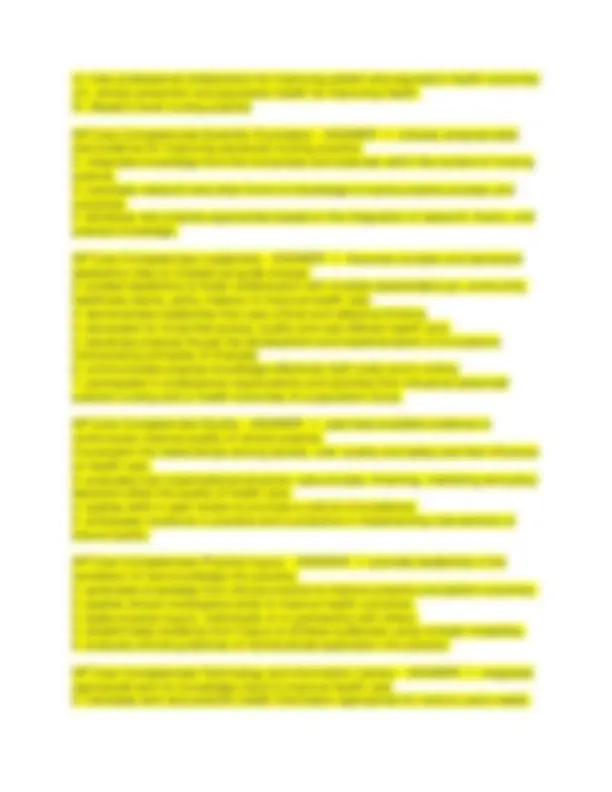
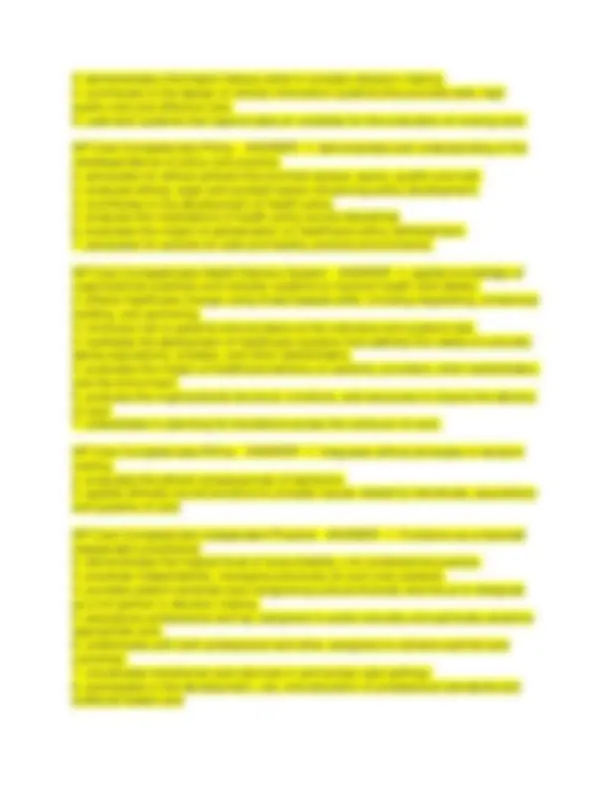
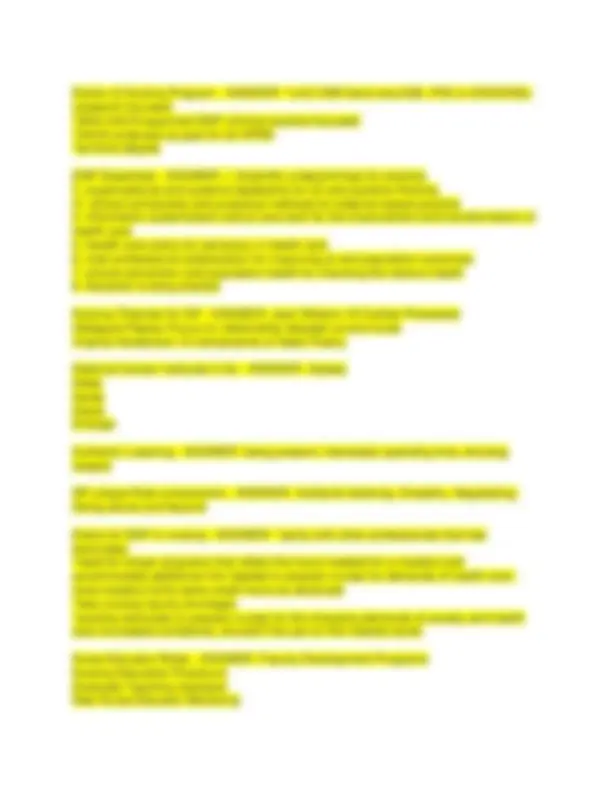
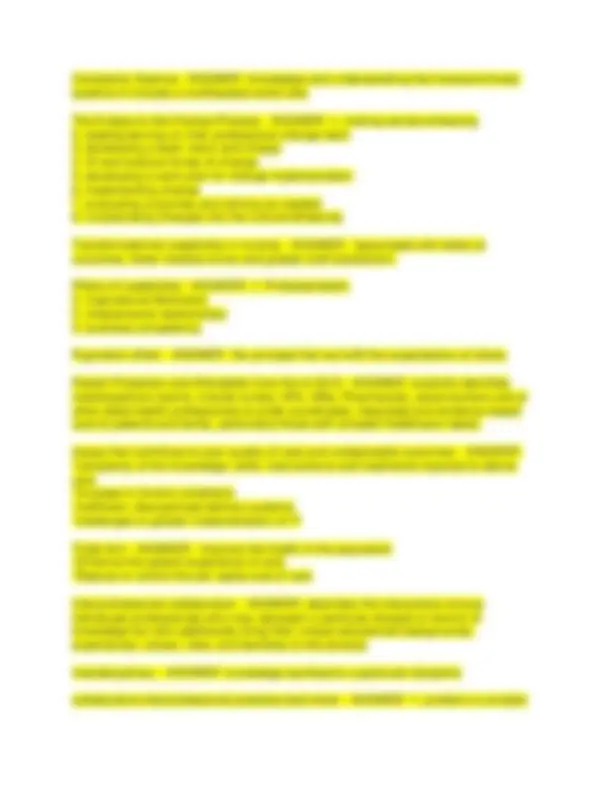
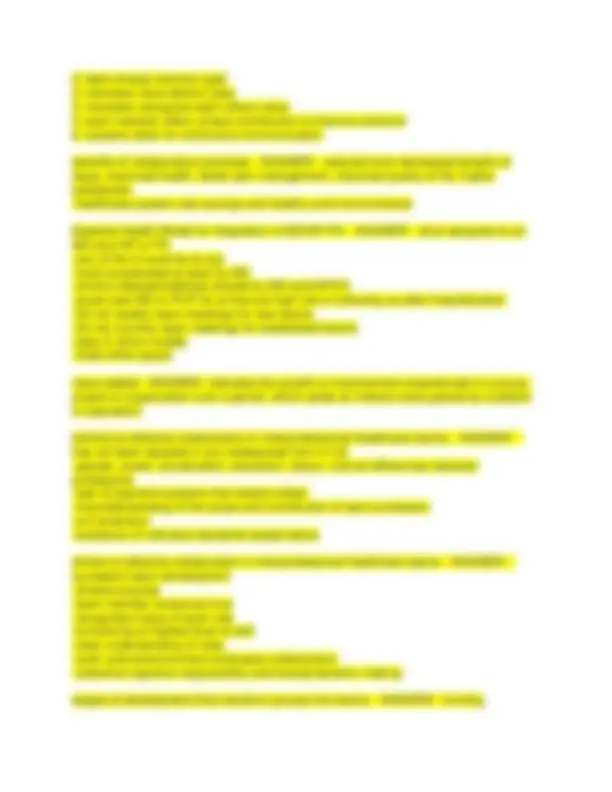



Study with the several resources on Docsity

Earn points by helping other students or get them with a premium plan


Prepare for your exams
Study with the several resources on Docsity

Earn points to download
Earn points by helping other students or get them with a premium plan
Community
Ask the community for help and clear up your study doubts
Discover the best universities in your country according to Docsity users
Free resources
Download our free guides on studying techniques, anxiety management strategies, and thesis advice from Docsity tutors
Advance Practice Nursing Chapters 1-6 Questions With Correct Answers..pdf
Typology: Exams
1 / 12

This page cannot be seen from the preview
Don't miss anything!







Advanced practice registered nurse (APRN) - ANSWER- masters prepared nurse who provides direct clinical care types of APRN - ANSWER- NP, CNM, CRNA, CNS APRN roles that require additional licensure - ANSWER- NP, CNM, CRNA Advance practice nursing (APN) - ANSWER- any form of nursing intervention that influences health care outcomes for individuals or populations, including direct care of individual patients, management care for individuals and populations, administration of nursing and health care organizations, and the development and implementation of health policy. Consensus Model for APRN REgulation - ANSWER- *done by APRN consensus work group and National Council of State Boards of Nursing APRN advisory Committee *address the irregularities in regulation of APRN across states APN examples - ANSWER- * CNL, CNS, Nurse Educators (direct pt care)
*engages in partnerships at multiple levels of the health systems to ensure effective coordination, delivery, and evaluation of clinical prevention and health promotion interventions and services across care environments *uses evidence to design and direct system improvements that address trends in safety and quality *advocates for policies that leverage social changed, promote wellness, improve care outcomes, and reduce cost Nurse Educator - ANSWER- requires specialized preparation must be competent clinician expertise in the 3 ps-phatho, pharm, phys assessment Nurse Practioner - ANSWER- *started in 1960s due to shortage of pcp's for the pediatric population *1990s masters level education *2004 AACN recognized DNP for entry-level *prescriptive authority in all 50 states and DC Nurse-Midwife - ANSWER- *first school in 1925 by Mary Breckenridge (founded Frontier Nursing Serice) *FAmily health services as well as childbirth/women's health *prescriptive auth in 50 states, DC, American Samoa, Guam and Puerto Rico Nurse Anesthetist - ANSWER- A nurse who completes a course of study in an anesthesia school; carries out preoperative visits and assessments; administers and monitors anesthesia during surgery; and evaluates postoperative status of patients Nurse Administrator - ANSWER- Nurse who supervises the organization of nursing care to ensure overall safety and quality No masters degree needed for basic certification Master's or higher for Advanced Cert. History of NP - ANSWER- *Lilian Wald's nurses provided primary care for common illness and emergencies that didn't require a referral *1965-NP formally developed by Loretta Ford and Henry Siler *1970s-federal funding helped establish NP programs *NP programs doubled 1992- 1997 *more than 330 NP programs now Master's Essentials - ANSWER- I. background for practice from sciences and humanities II.organizational and systems leadership III.Quality improvement and safety Iv.translating and integrating scholarship into practice v.Informatics and healthcare technologies VI. health policy and adocacy
Doctor of Nursing Program - ANSWER- *until 1999 there was EdD, PhD or DNS/DNSc (research-focused) *2004 AACN approved DNP (clinical practice focused) *AACN endorses as goal for all APRN *terminal degree DNP Essentials - ANSWER- I. Scientific underpinnings for practice II. organizational and systems leadership for QI and systems thinking III. clinical scholarship and analytical methods for eidence-based practice
Retail clinics Legal and business consulting Journalism Education IT development Pharmaceuticals Organizational Mgmt and admin Types of Integrative Healing Modalities - ANSWER- 1. Whole Medical Systems-
Complexity Science - ANSWER- knowledge and understanding that transcend linear systems to include a multifaceted world view The 8 steps to the Change Process - ANSWER- 1. making sense/unfreezing